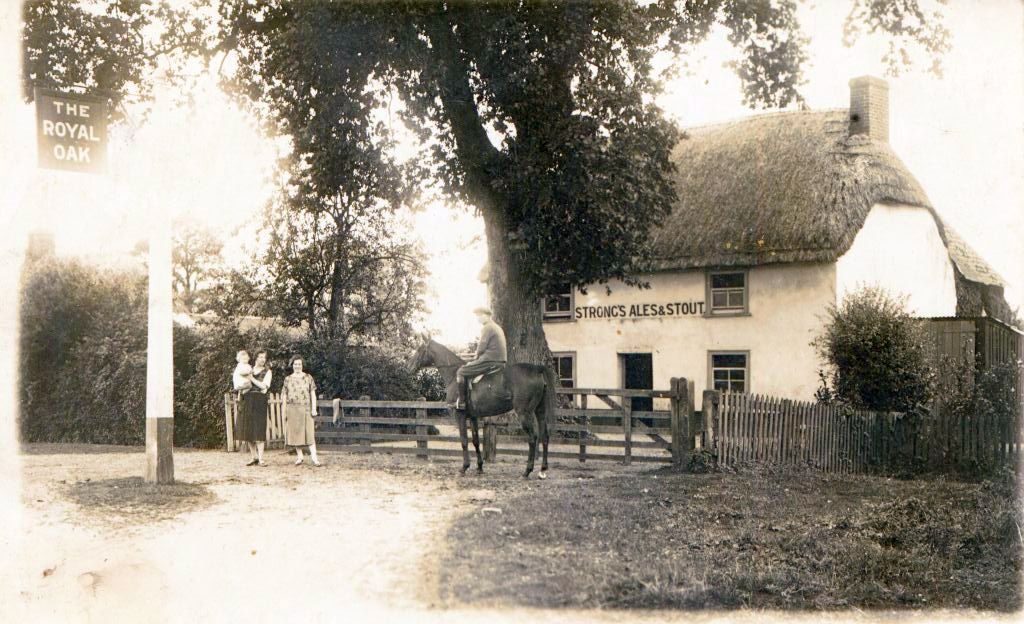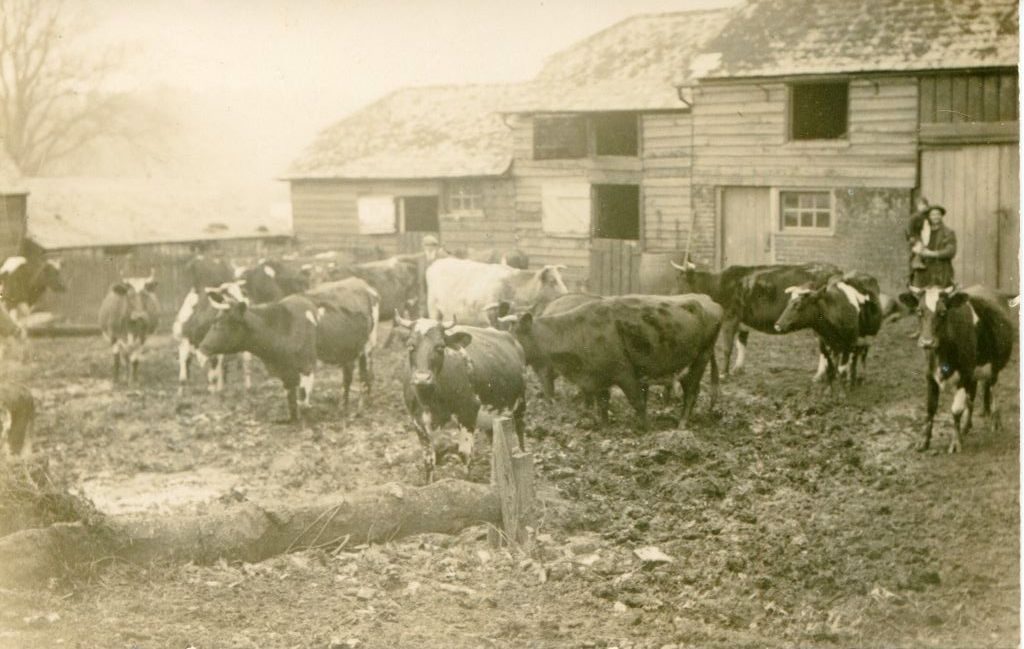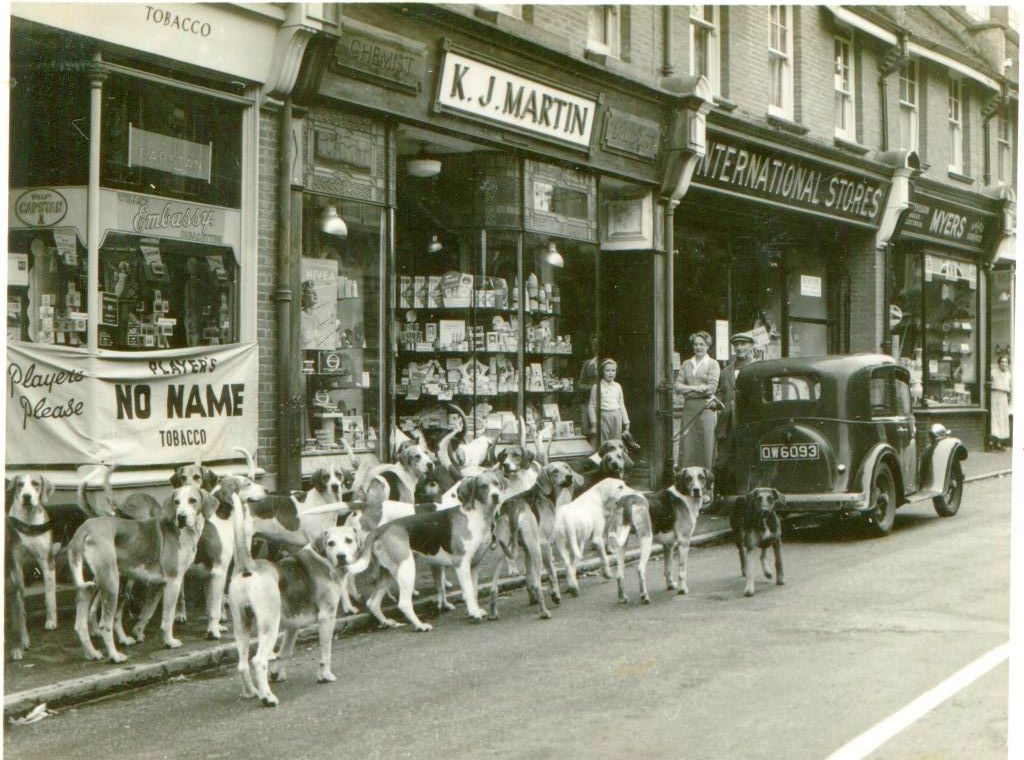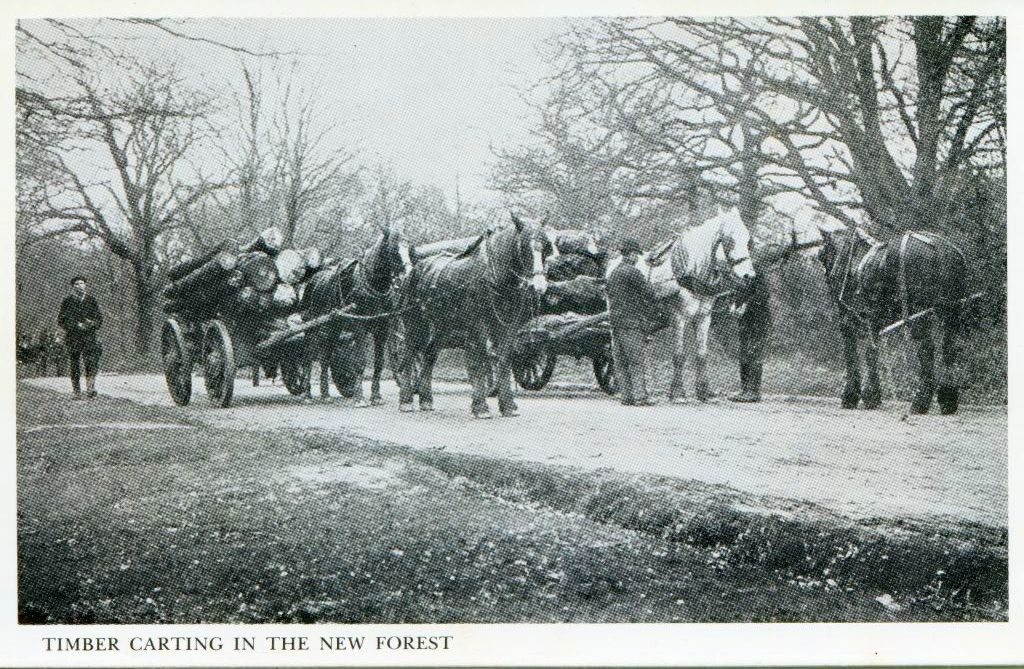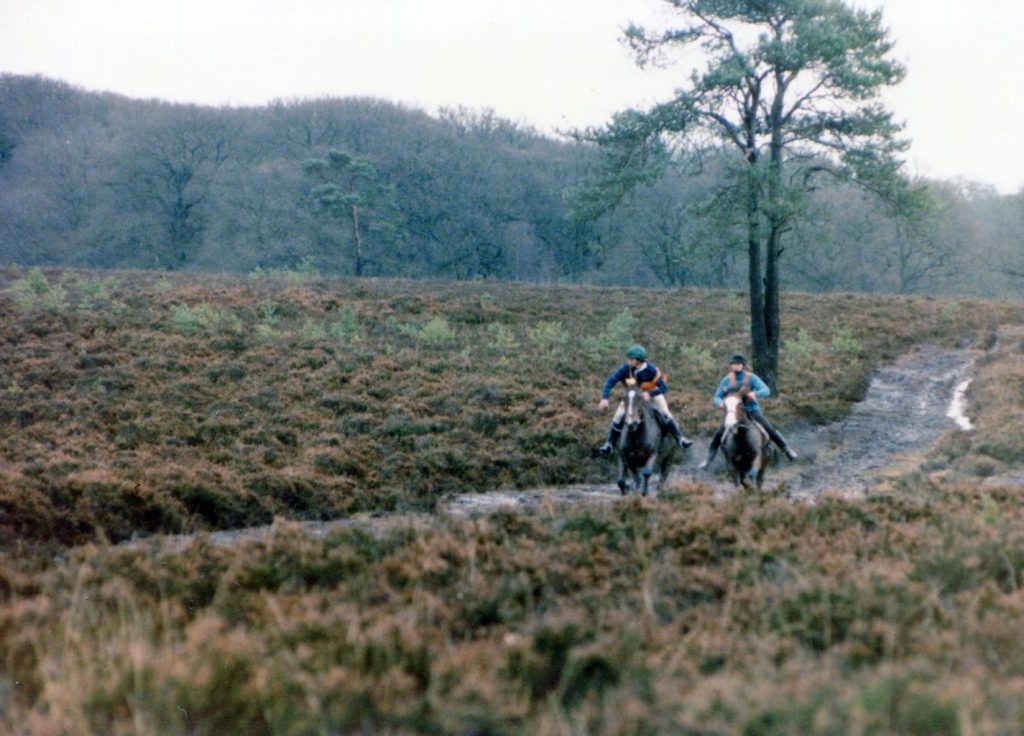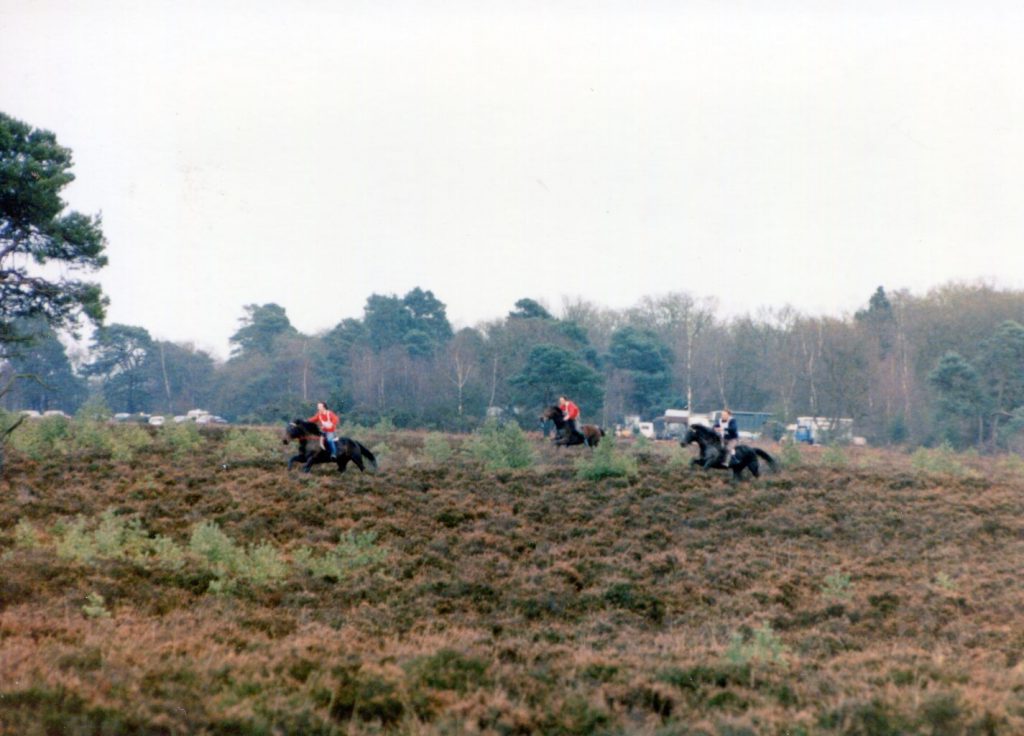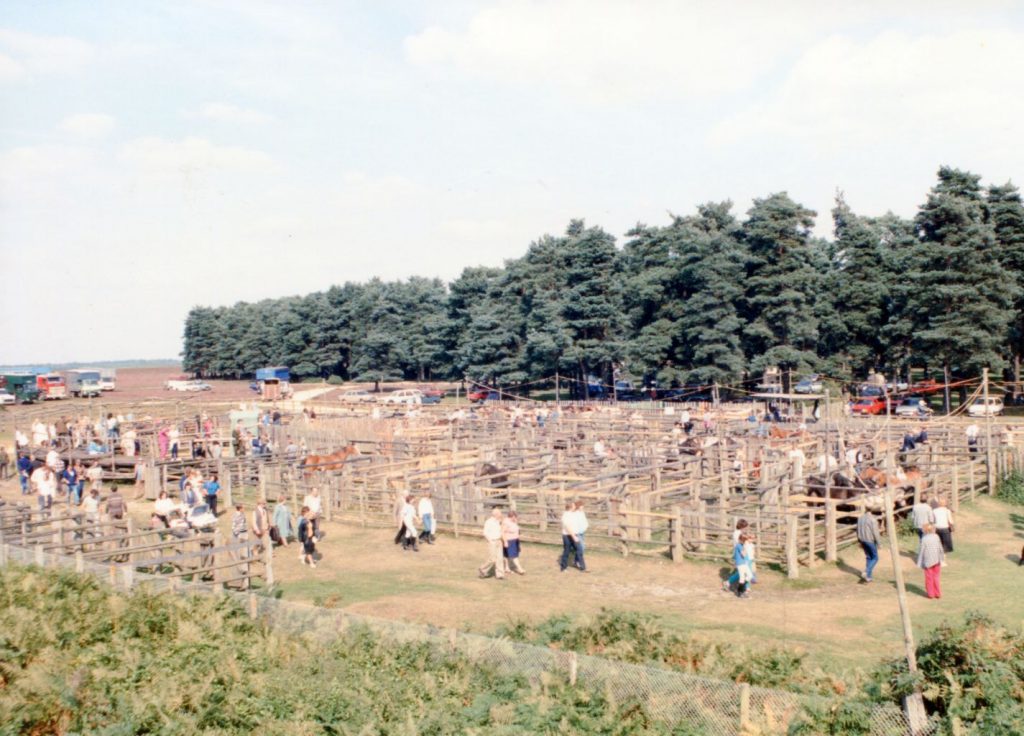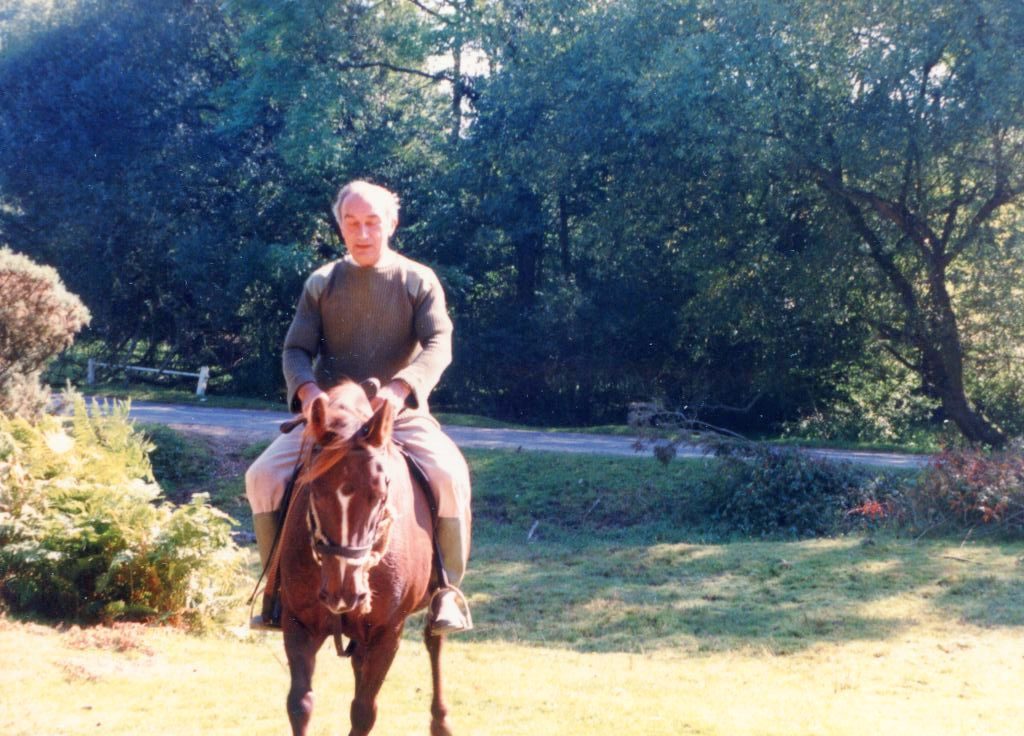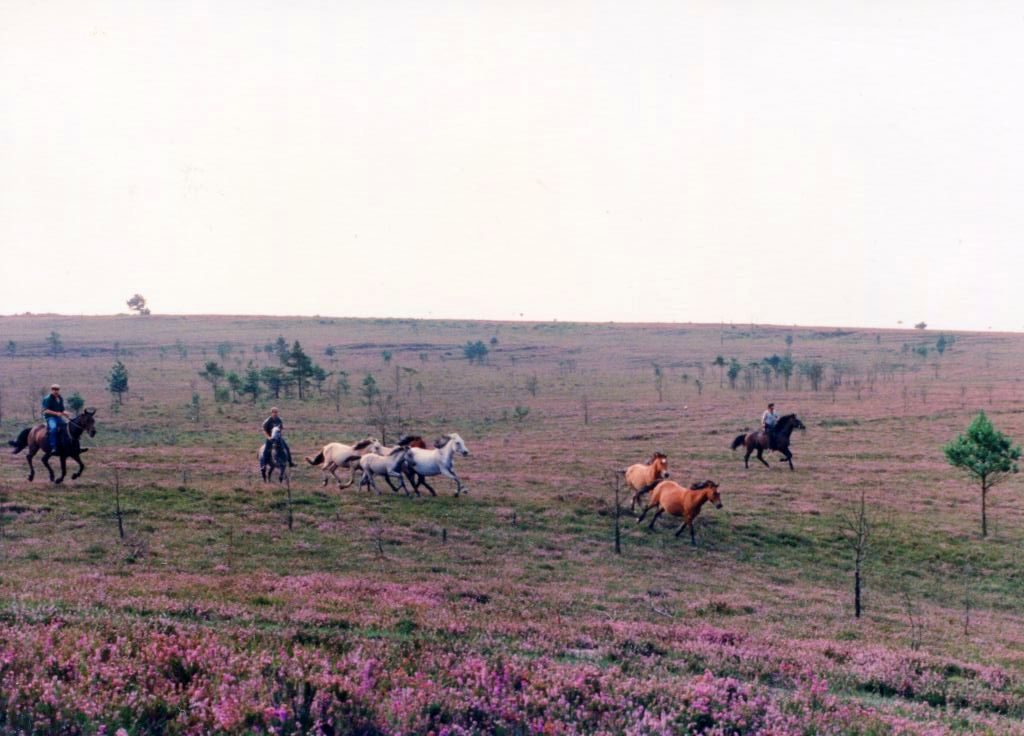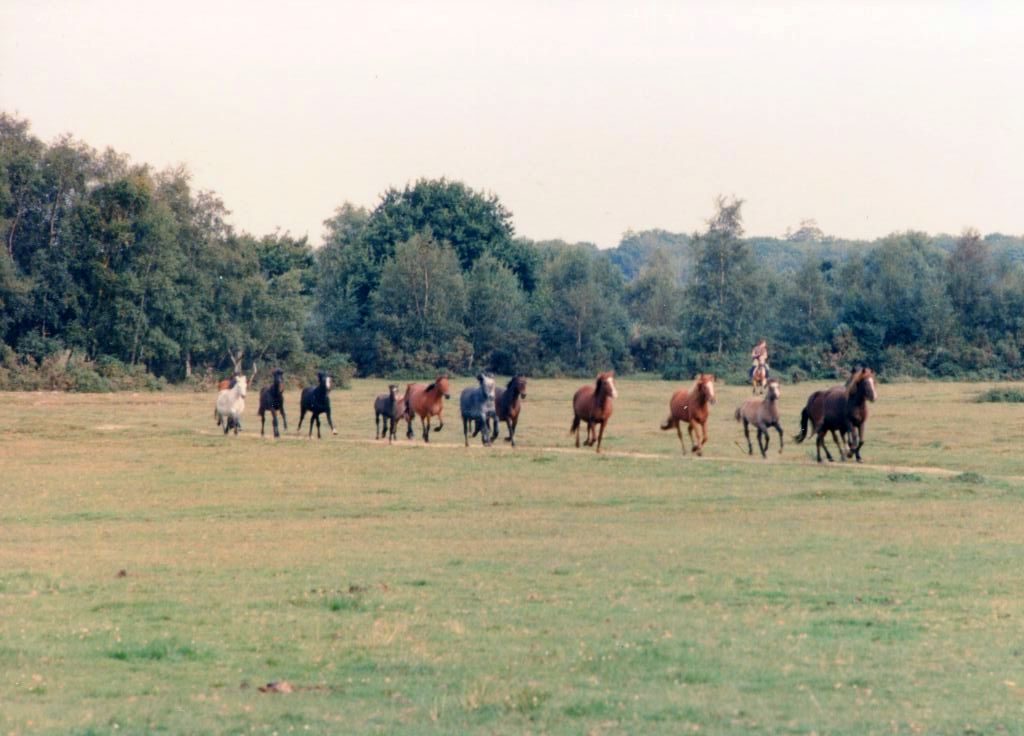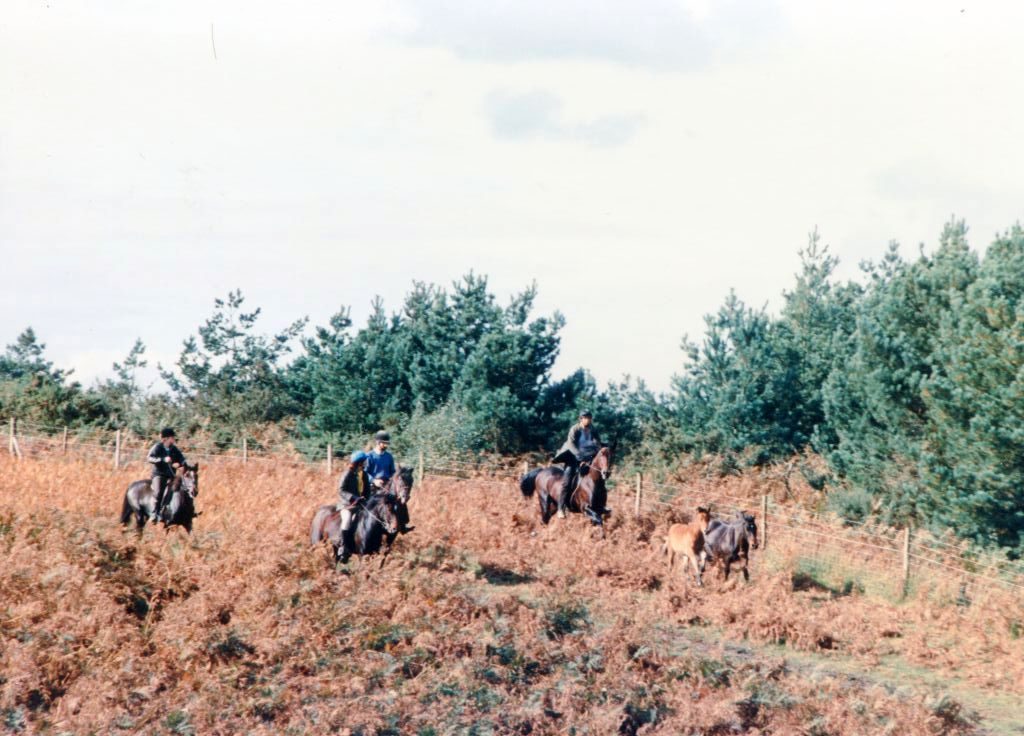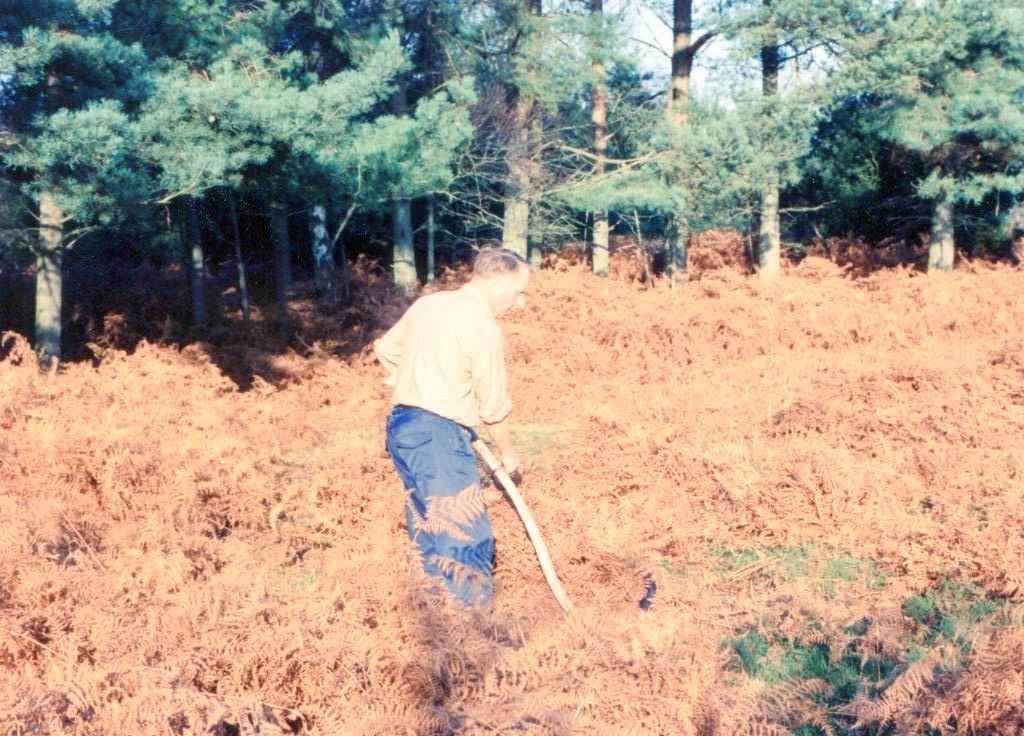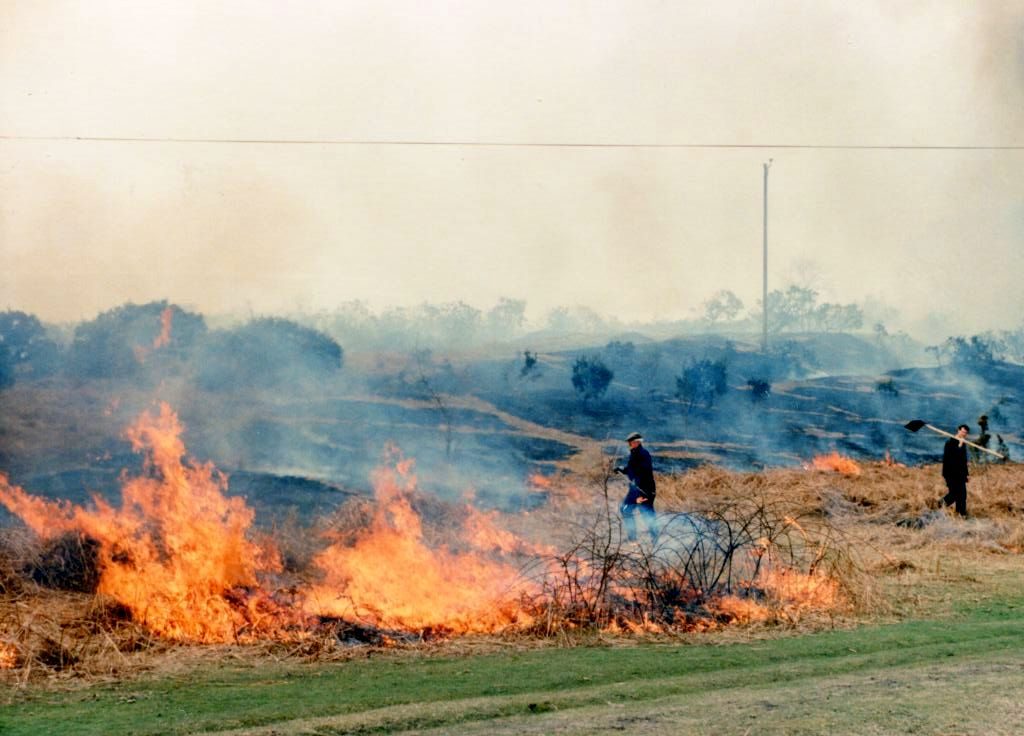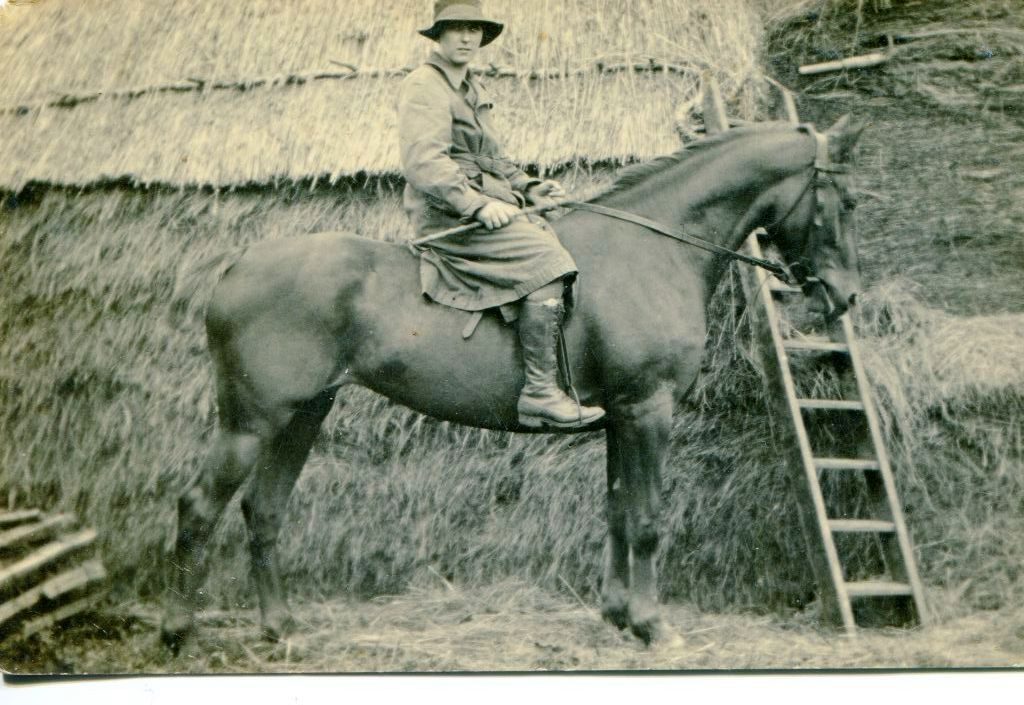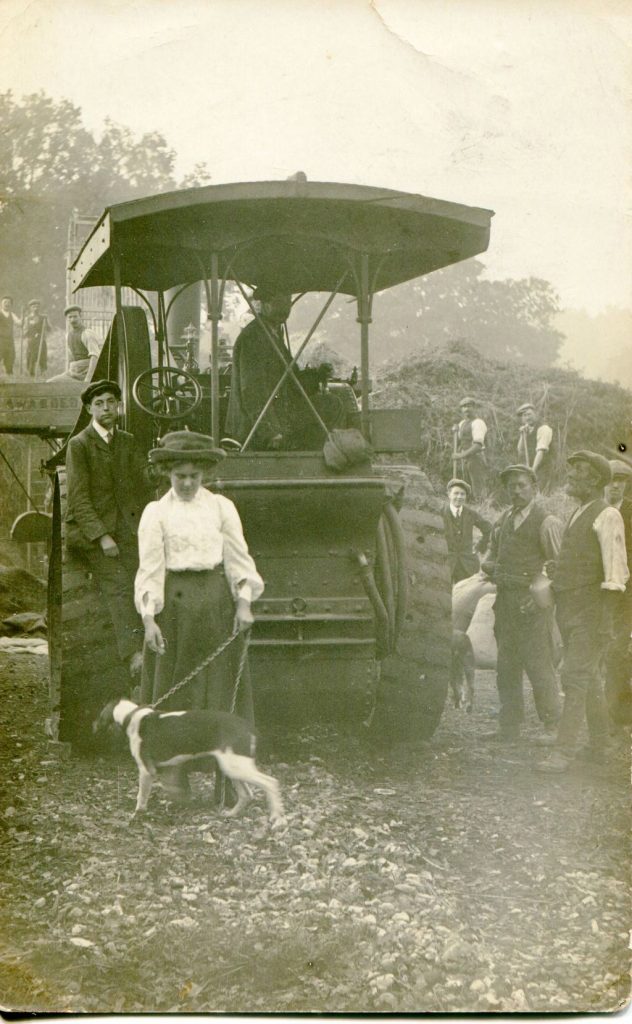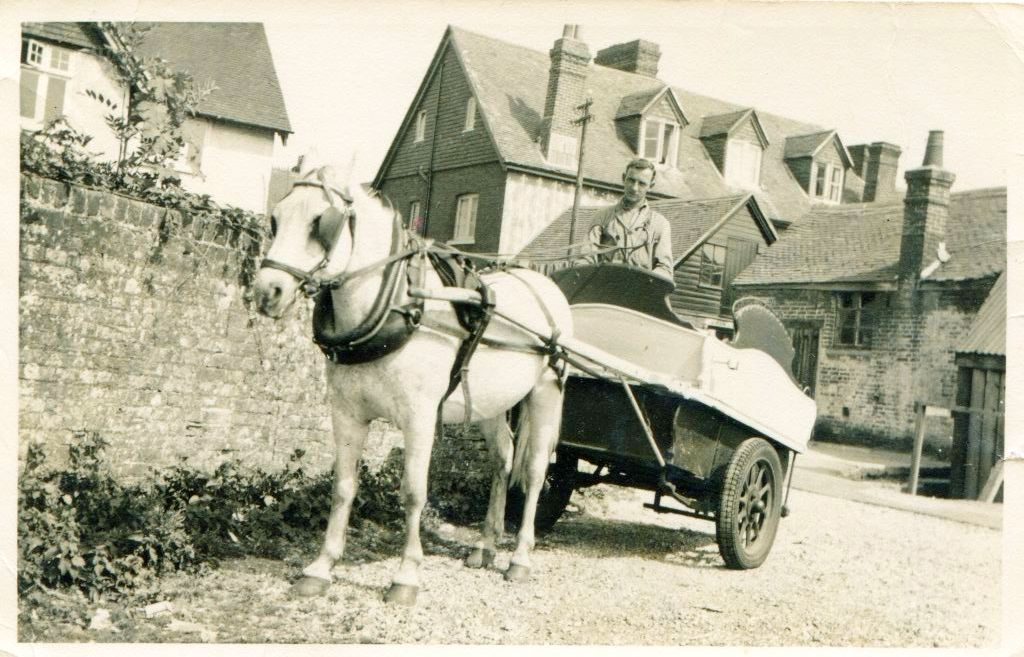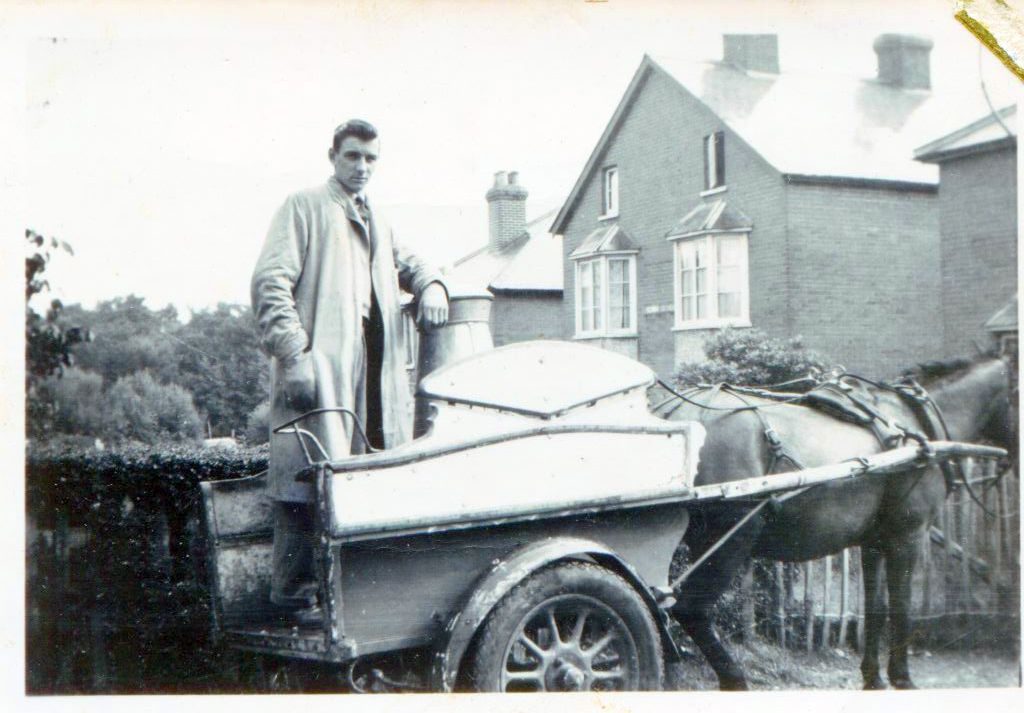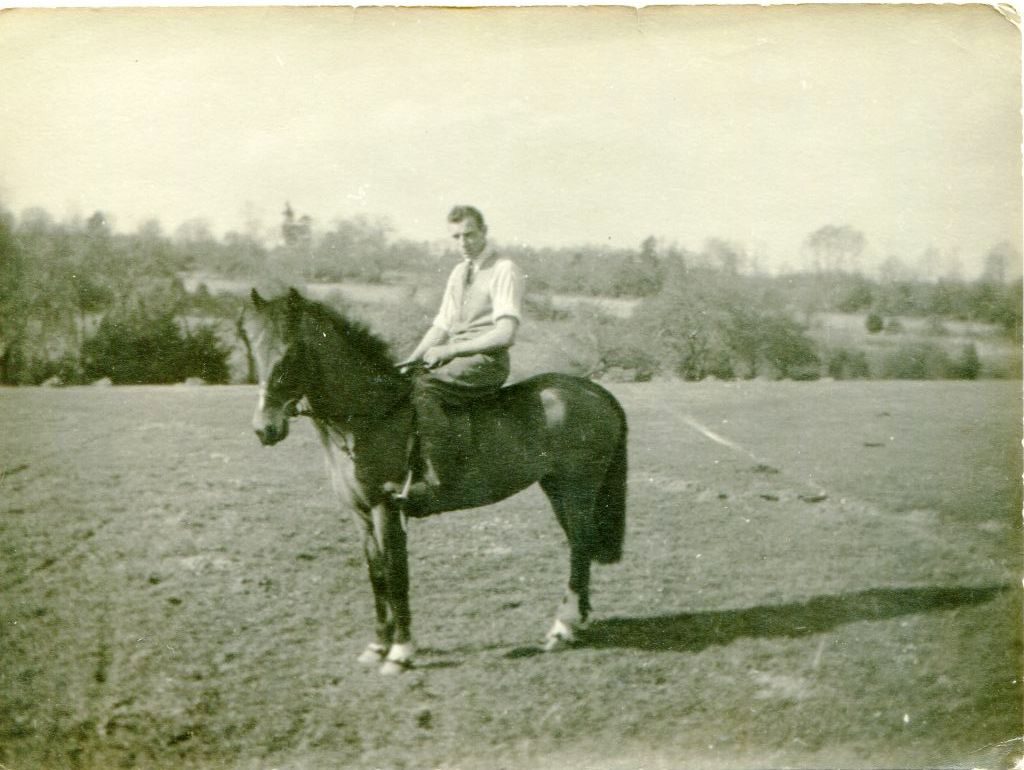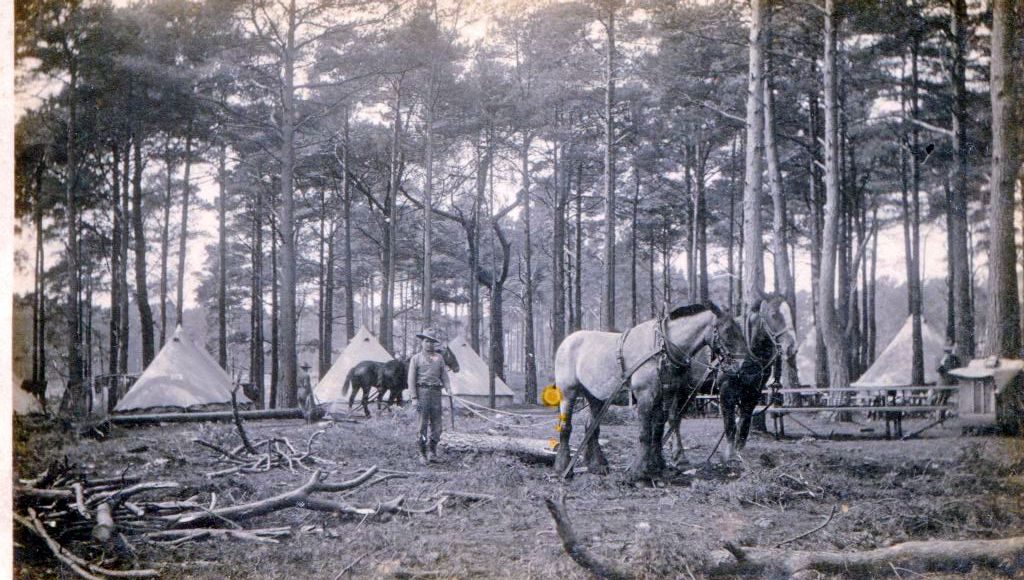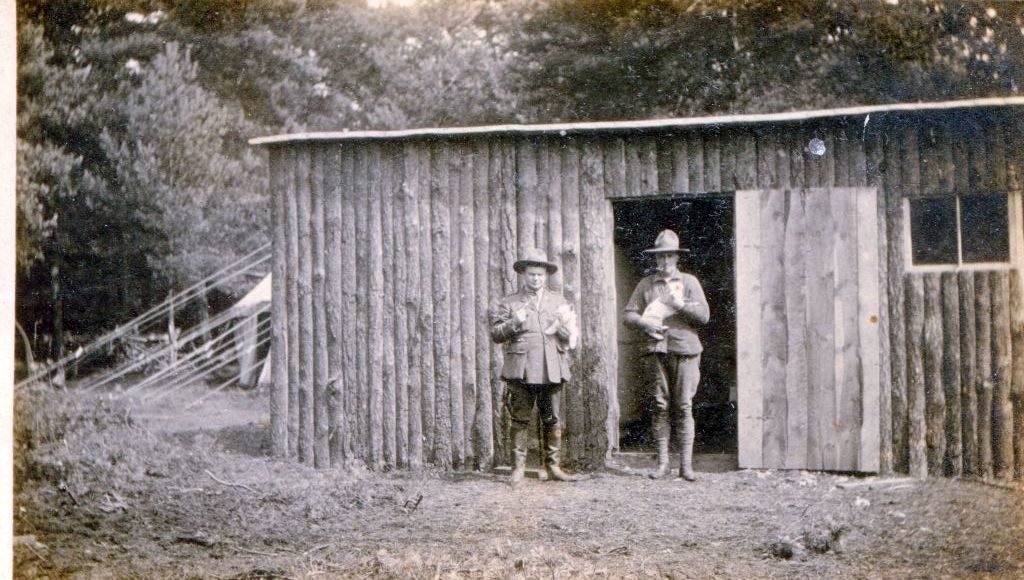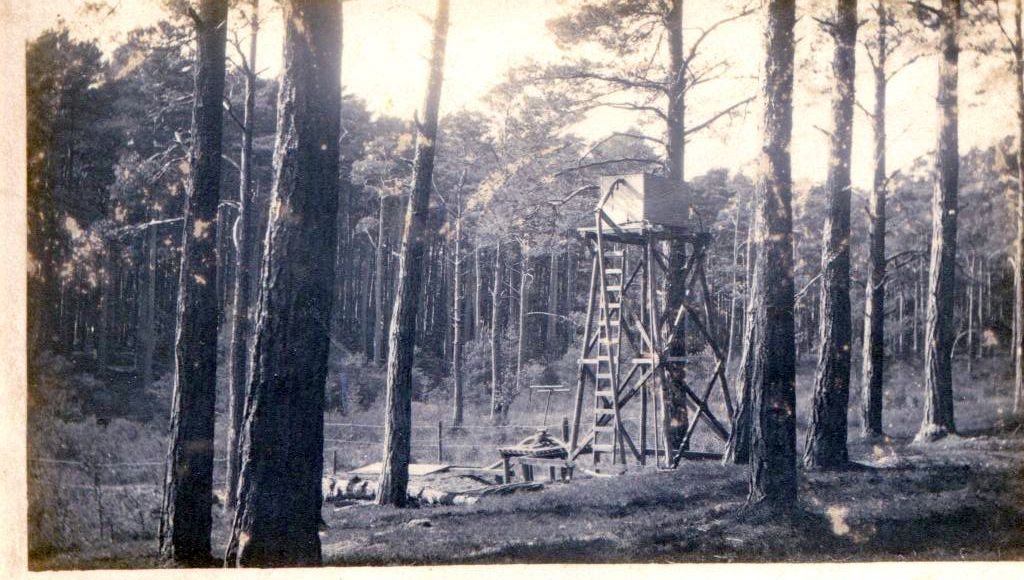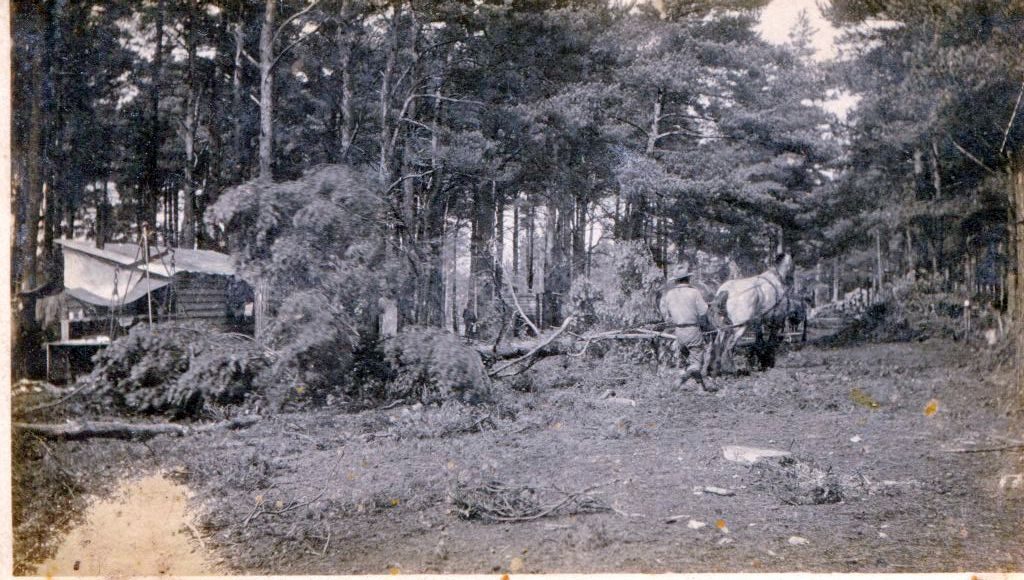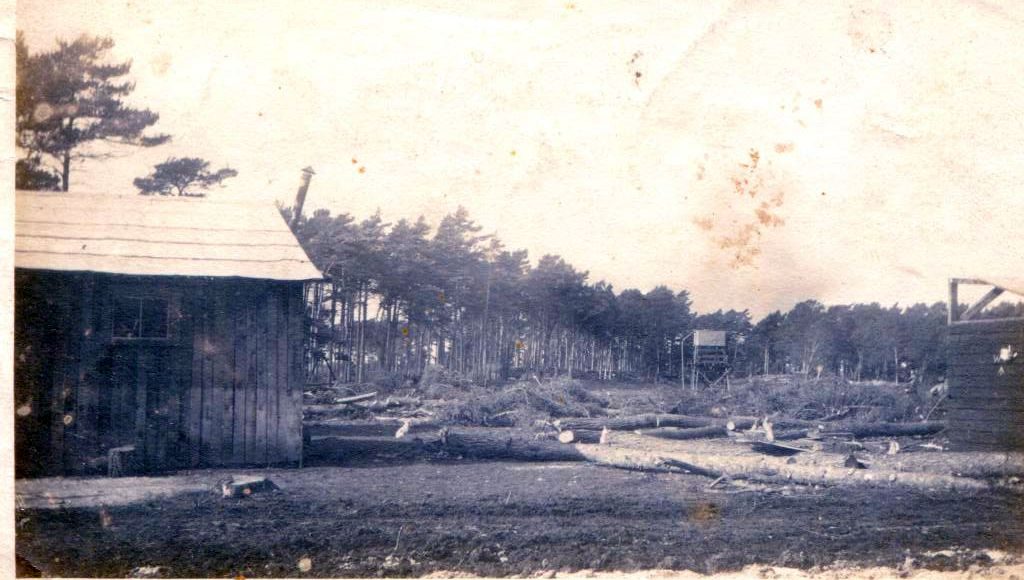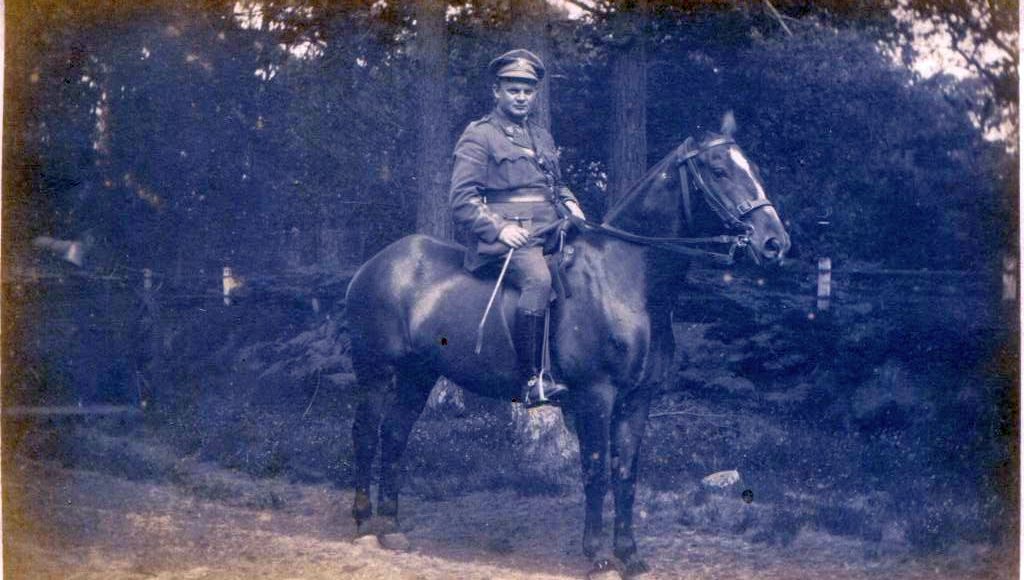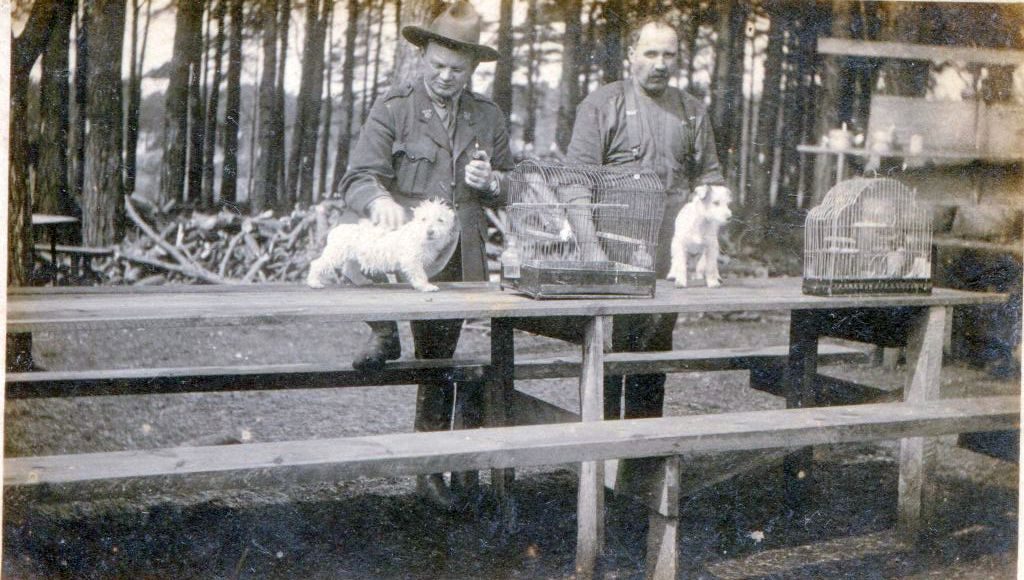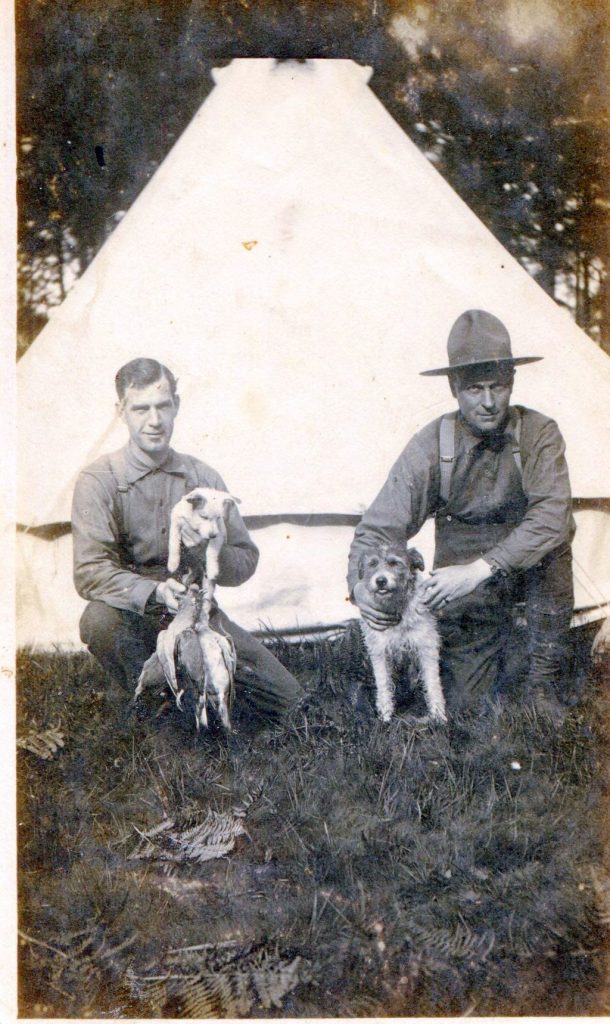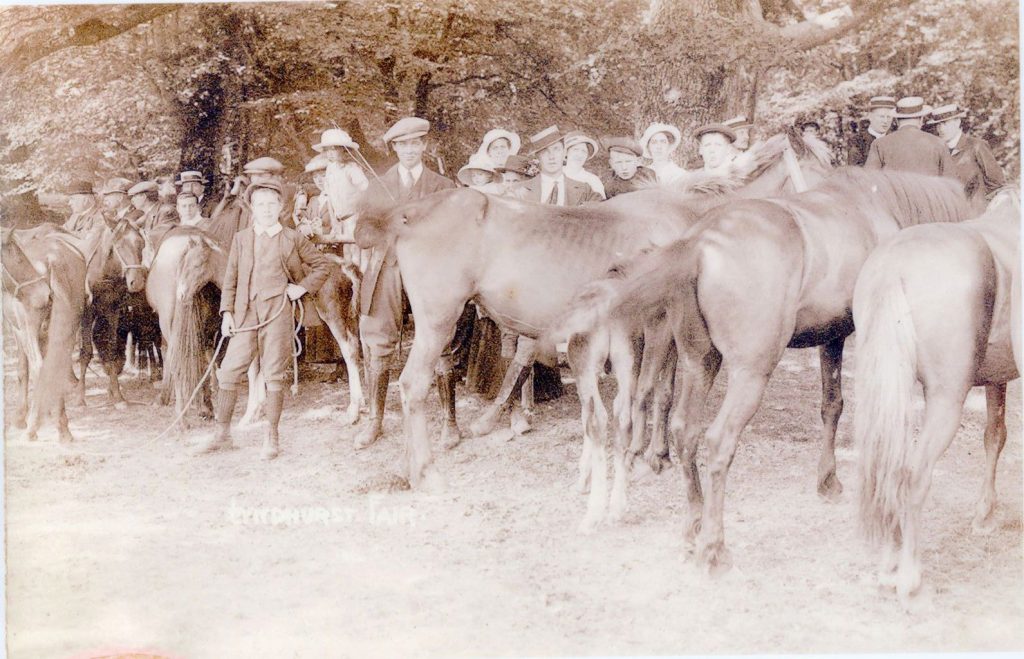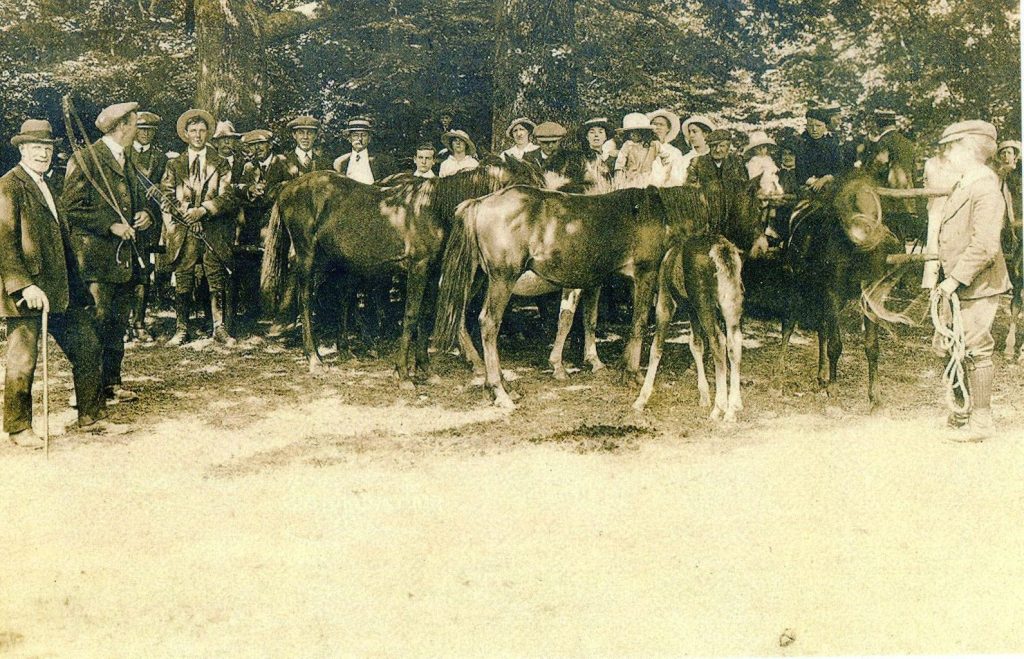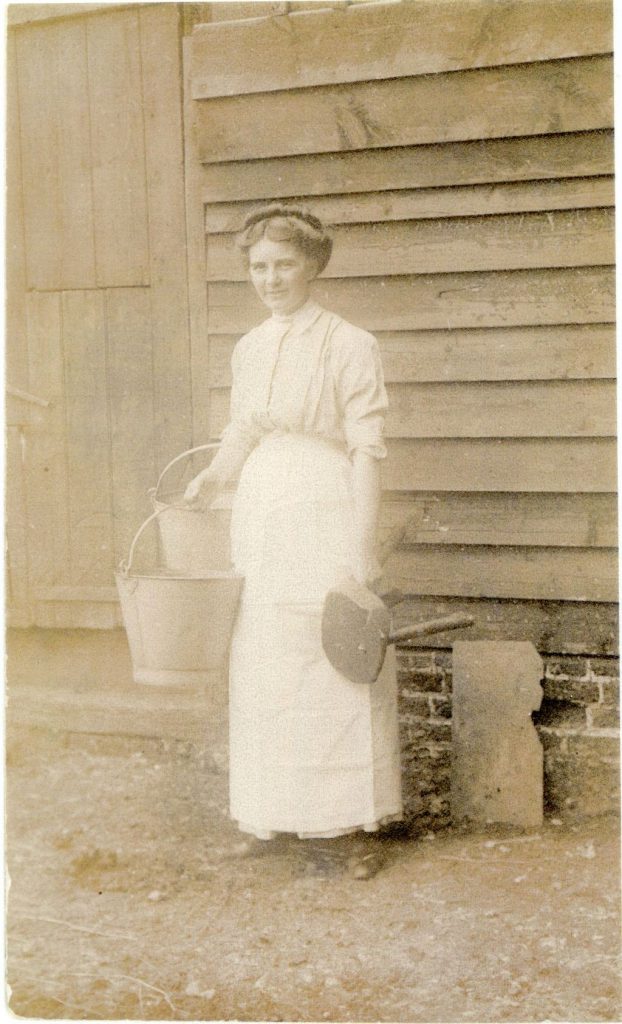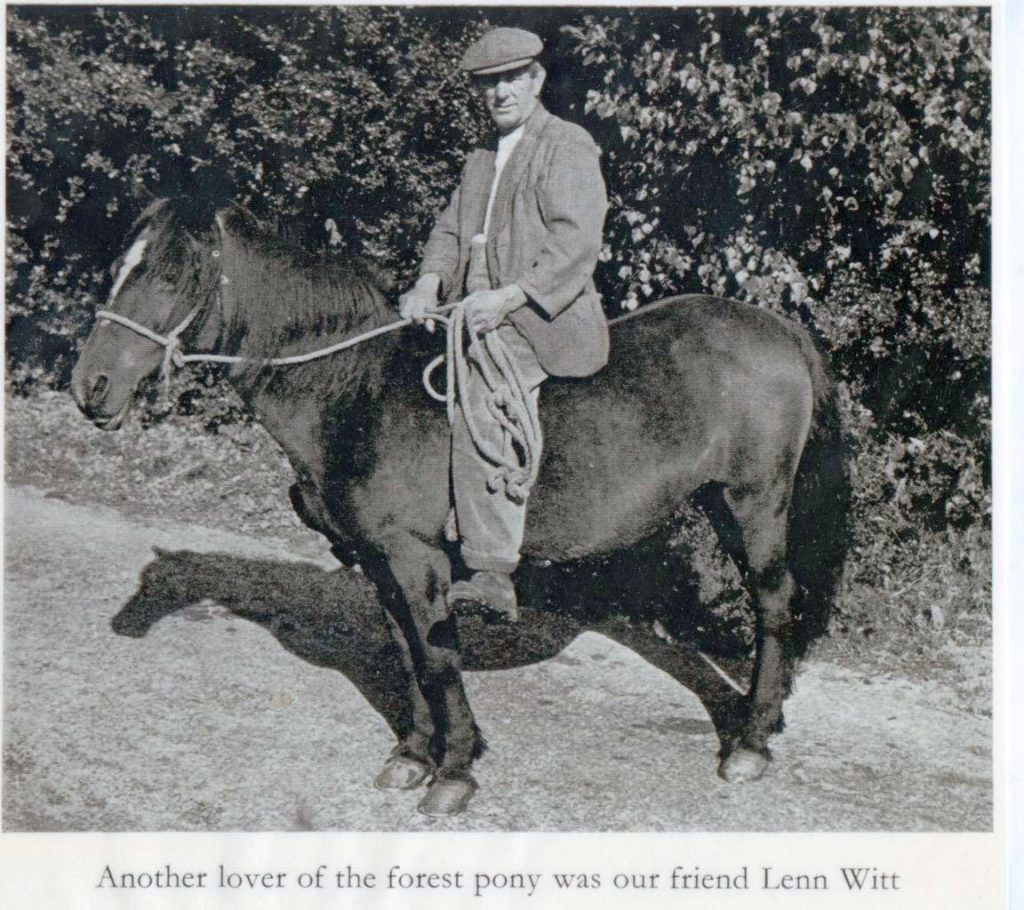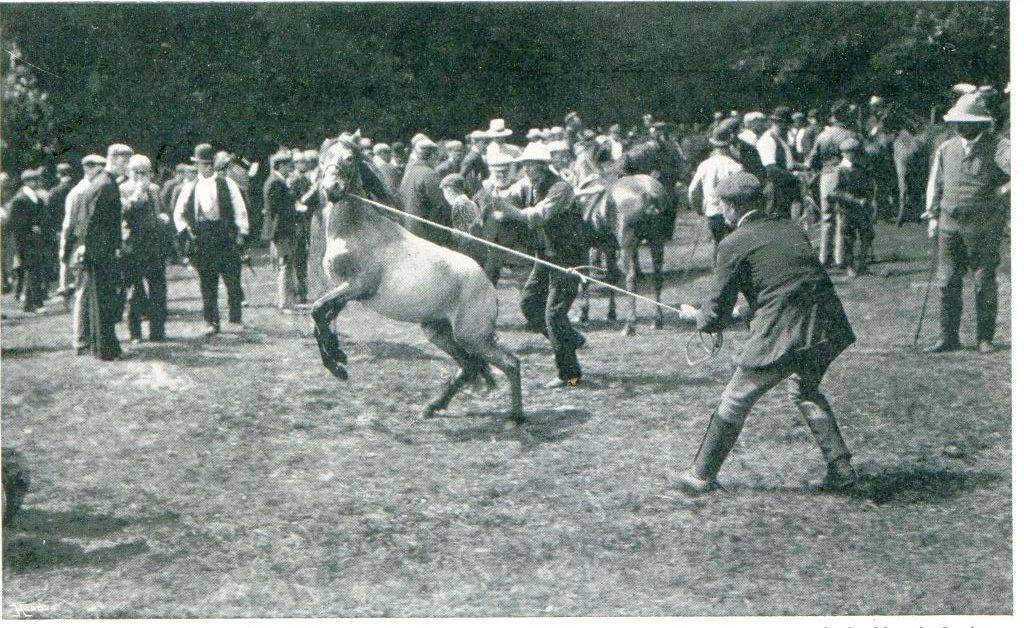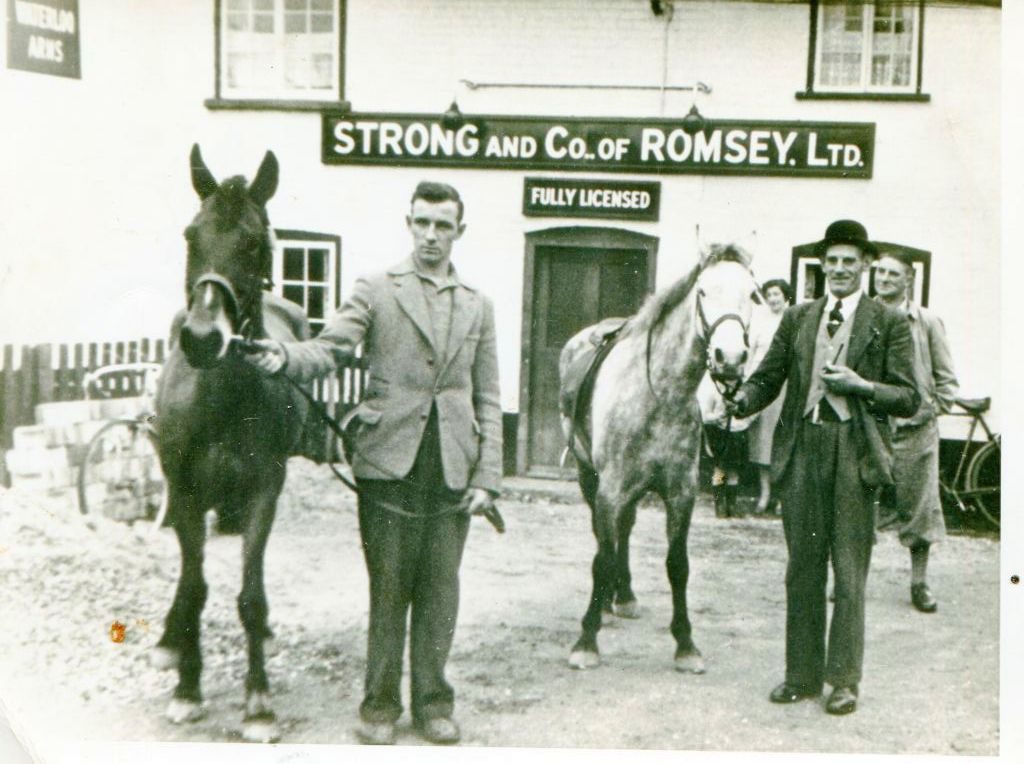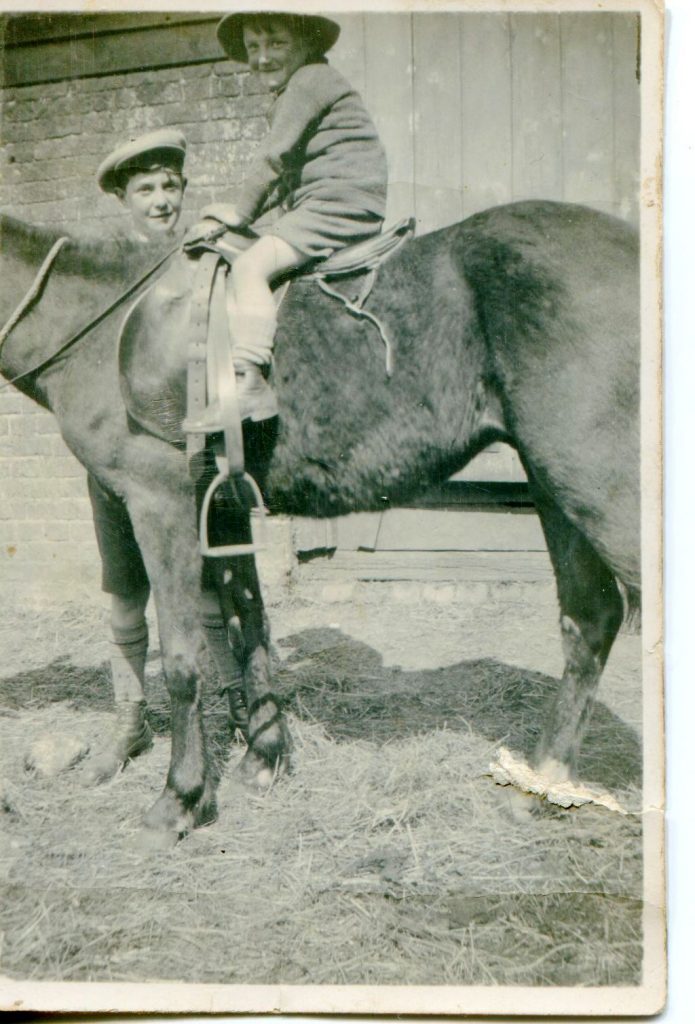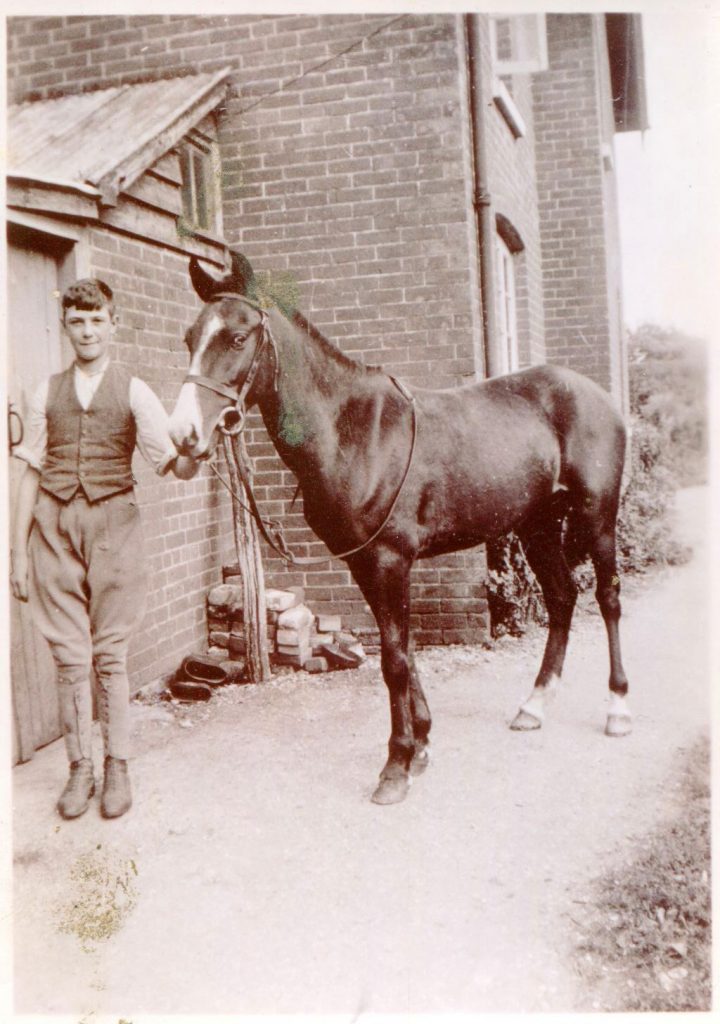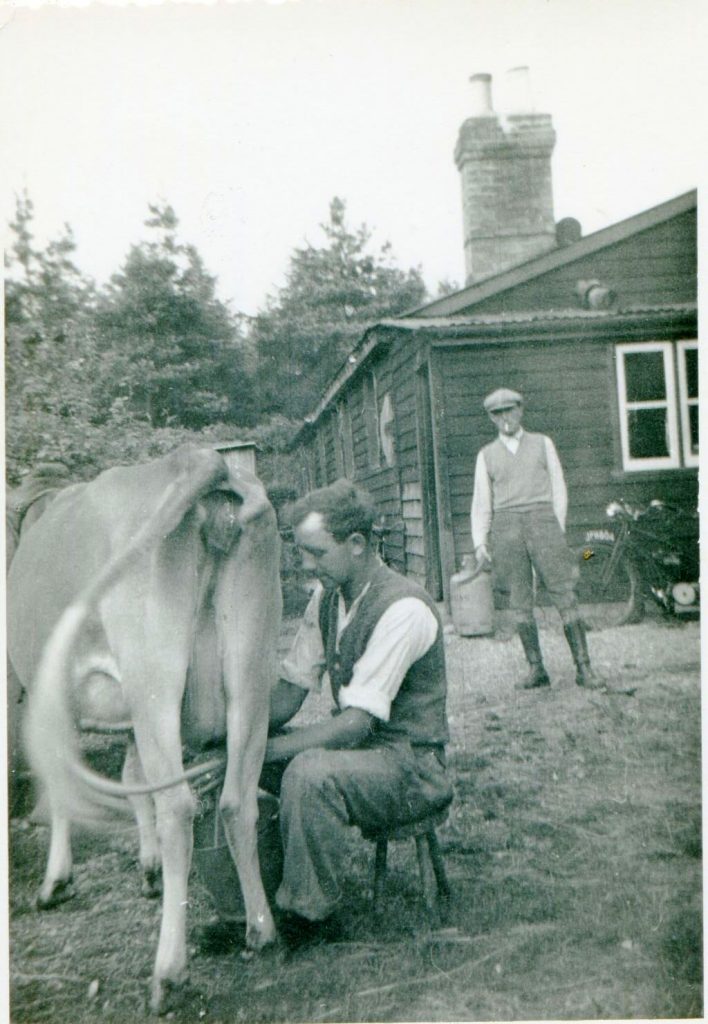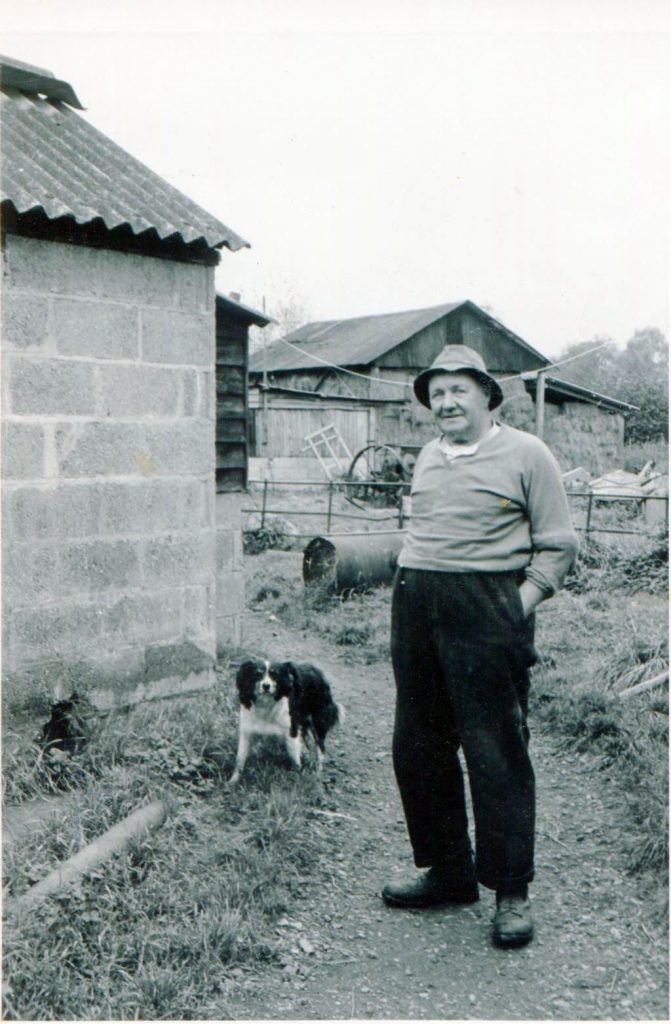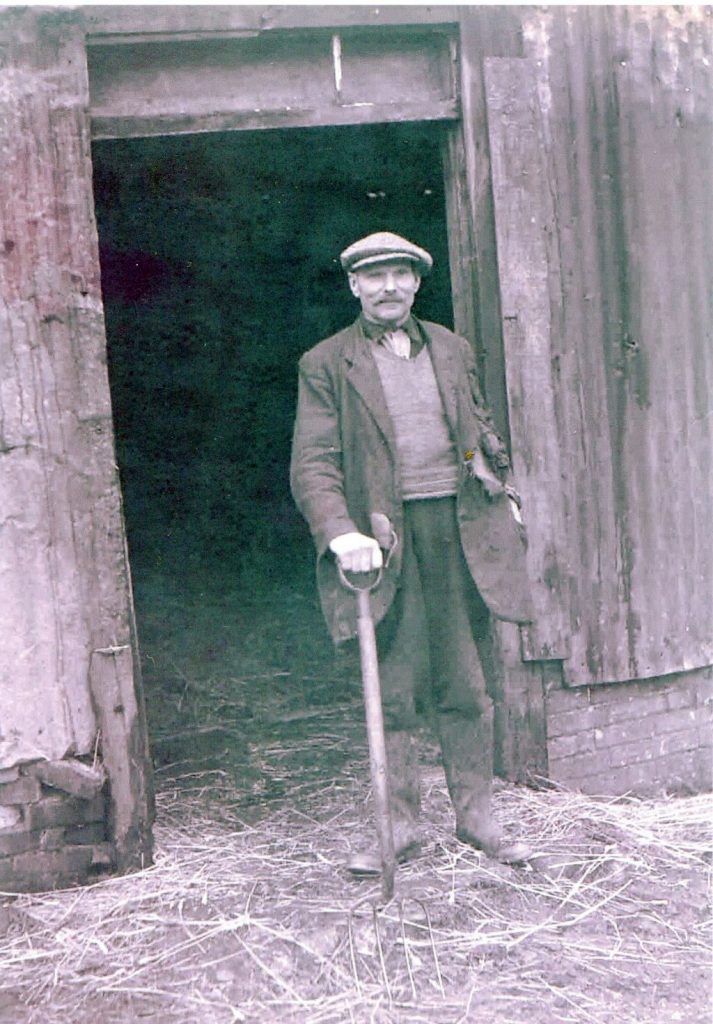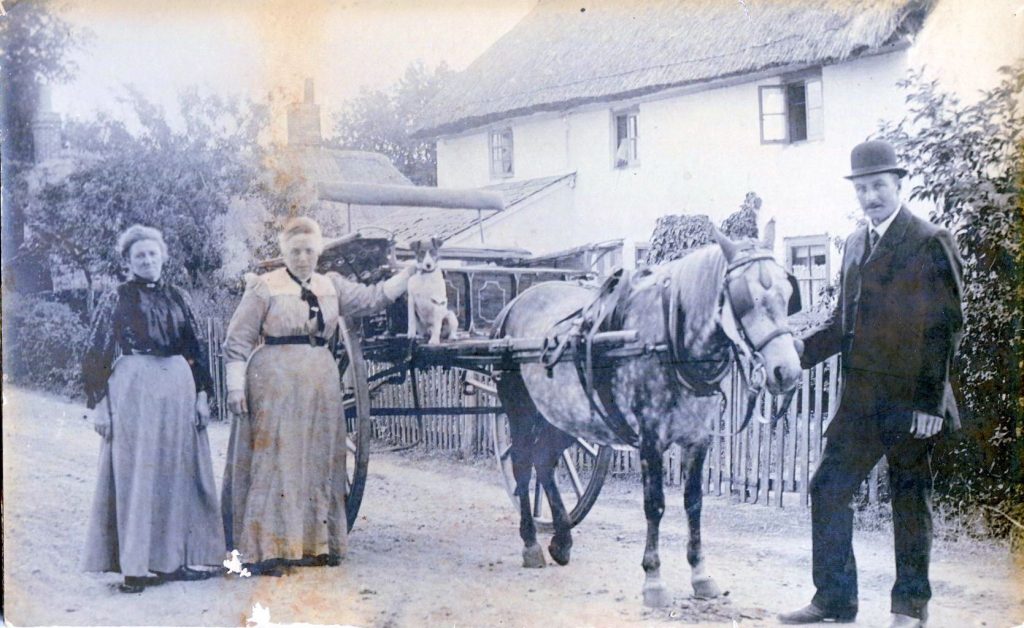Images: Caroline Page, copyright reserved. For any rights requests, please contact the New Forest Heritage Centre in the first instance.
Caroline Stride Trans2 CH7 Duration: 9:17
CB: Seventy-seven (CS277)
Caroline: Right, again, I think this probably in the Burley area, and along that time actually there was what was called the ‘A Team’ which amounted to a lot of the Adams family and I would say a lot of the ones to the left of the picture were the [information withheld] family and associates; there was a lady called [information withheld] on the grey, I only know her as Jackie but she rode with the Adams family for a long time with the ‘A Team’. Again, I can’t say – certainly there’s [information withheld], and probably two of his boys there riding in that group. The person stood to the side with chaps on is [information withheld]; the person who is centre of the picture with his back to us is [information withheld]; on the grey is Richard Stride; in front of him, in front of the grey horse is Raymond Stride; and Jeff Kitcher here on the chestnut.
CB: Seventy-eight (CS278)
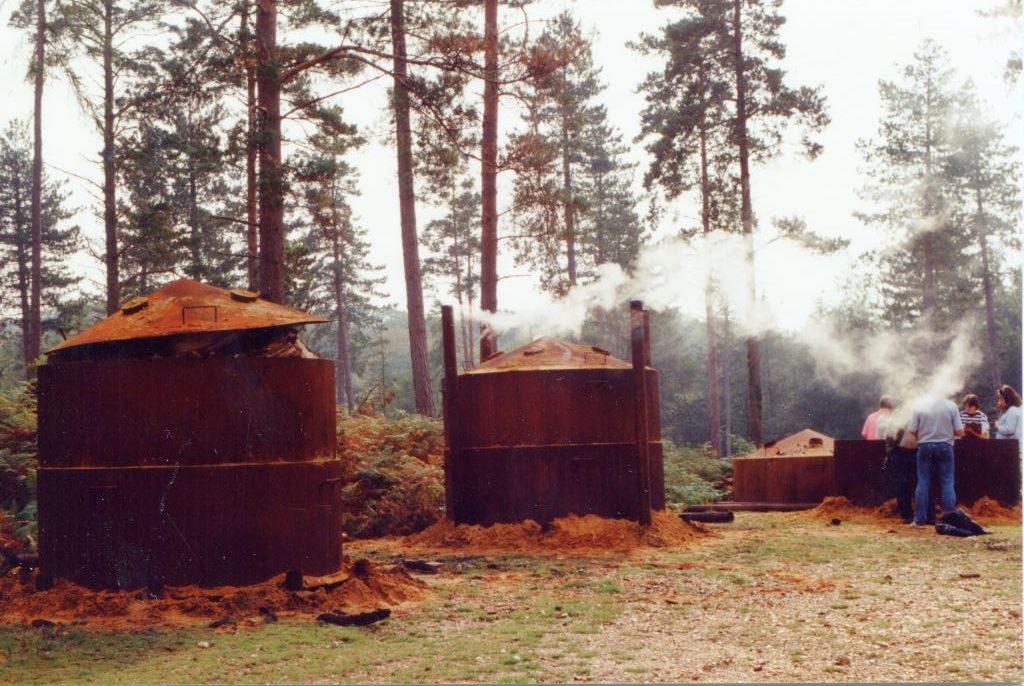
Caroline: There was just sort of a bit of interest in charcoal burning and this was what appeared to be a good idea and a new venture in charcoal burning in the New Forest but sadly it never really got going. This was at Bentley’s and they had these big charcoal burning drums, kilns; and, yeah, I mean it got going for a little bit but it didn’t really take off as a business venture.
CB: Okay. Seventy-nine (CS279)
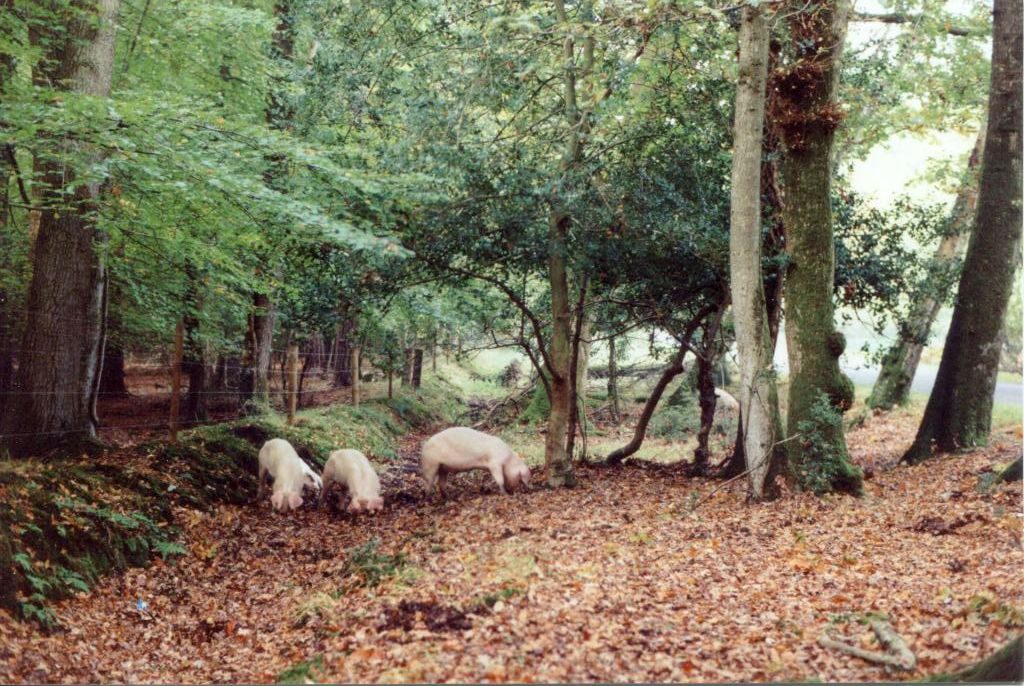
Caroline: Not sure where this picture would have been taken, but must have been in the Autumn I would say with some pigs out in the panning season, my guess somewhere down around the Burley area.
CB: Yeah. Yeah. Eighty (CS280)
Caroline: Ah, now this was a round-up, unofficial drift really, down at Warwickslade; we as a family had ponies running in quite a difficult part of the Forest to round up because of the wooded area and it was a meeting with the Beasants and the Strides, to gather in as many ponies we could; and they put up a sort of temporary pound down against Rhinefield Enclosure. This was always done at the latter end of the drifting season or even sort of into November time and obviously they’re just getting their plans under way. In the picture …erm
CB: Who’s that with the skull cap on?
Caroline: The person with the skull – that’s Robert and I would say the child with her back to us was [information withheld]; with the red and blue coat on is Andrew Stride, Robert’s brother; the boy looking directly at us is William Stride, that’s John Stride’s son. Directly behind William is Richard, my husband, Stride; to the right of the picture then, to the right of Richard is Peter Beasant, [information withheld] brother; the little boy leaning against the tree with his finger to his face is [information withheld]; the person to the side looking back towards Richard is [information withheld]; and my guess, directly behind it would be Roly Beasant. The ginger-haired person to the right of the picture – that would be [information withheld], Richard’s cousin from Minstead.
CB: Okay, and that again, do you think that’s ‘eighties?
Caroline: Yep, yeah.
CB: Okay, so eighty-one (CS281)
Caroline: Right. So obviously while they were out gathering the ponies up, there was always time for just having a chat about Forest things or what children talked about in the Forest. To the left of the picture with the cream and reddy-grey jumper on is [information withheld]; and that’s Peter Beasant’s son; [information withheld] in the blue leant up against the little tree there; next to [information withheld] is [information withheld], that’s [information withheld]
’s brother; they were a twin – or are a twin; and then in the blue and red is Andrew. And at the time he’d broken his arm, so he hasn’t got –
CB: Oh, I see, there’s no hand!
Caroline: So he was – he was – had to just sort of be one of the walkers at the time because he couldn’t ride; ‘cos he’d had a riding accident a few weeks before and he’d broken his collar bone or something, I think; or broken his arm, I’m not sure; he did both, I don’t know what the occasion was.
CB: Eighty-two (CS282)
Caroline: Oh, right. Obviously, the er – probably the work had been done by then and to the left of the picture is John Stride taking light refreshment; and on the pony, who was Cosmo – that was the name of the pony and they used to ride him racing and he was a good little pony – mounted is William; and at the back is [information withheld]. So they’re brother and sister, [information withheld].
CB: Okay.
(CS283)
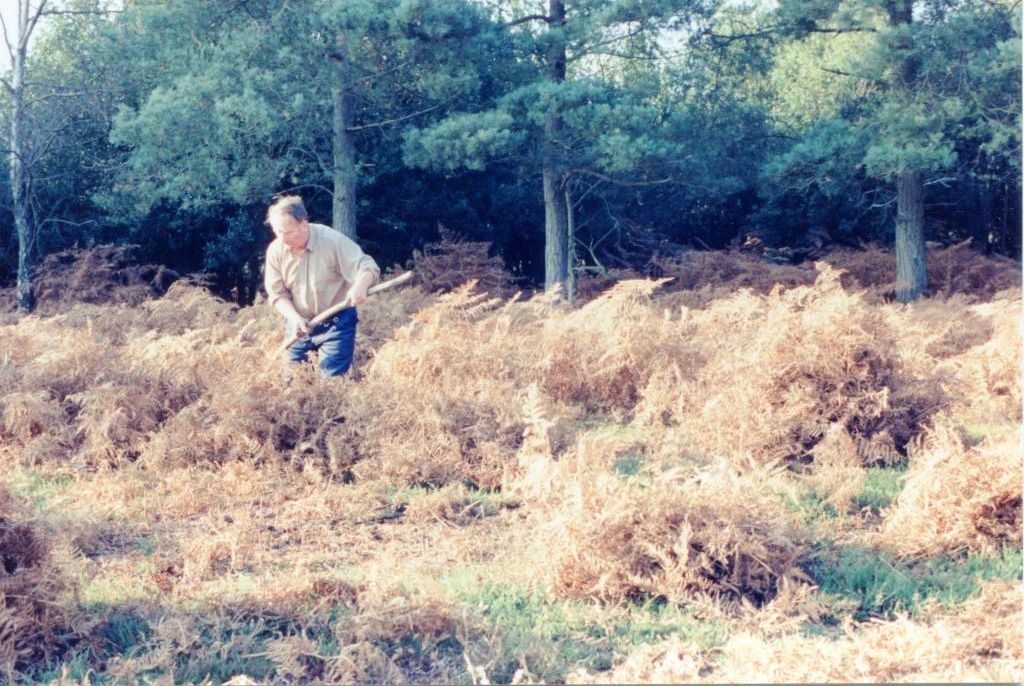
Caroline: Ah, this is Peter Brown, and he was scything bracken and this was a bracken rick we made down at Bolderwood Cottage; and when I was doing educational visits there we made a bracken rick and Peter was cutting the bracken in the autumn of the year with a long-handled scythe.
CB: Eighty-four (CS284)
Caroline: And here you see the fern being made into a rick. It must have been refreshment time there. On top of the rick is Richard; stood here in the foreground is [information withheld]; and to the side of him is [information withheld], [information withheld]; in the trailer is Andrew, our middle son.
CB: Thank you. Eighty-five (CS285)
Caroline: This is erm – I’m sure this is at Clay Hill Car Park at Burley. Robert our eldest son was riding – I think it was Luke, I think it was Roly Beasant’s riding horse at the time and they were just going to move off for the start of the races. And to the side, to the right of the picture I would say that’s a back view of [information withheld] and right on the edge of the picture is Richard, husband Richard.
CB: Eighty-six (CS286)
Caroline: Again, I think that’s probably the same start. In the background you can see Andrew and Richard Stride; I think the little girl who’s looking over the pony is Richard Beasant; and I’d say that’s probably on number 17 is Bob Mansbridge; number 2 on the foreground pony is [information withheld]; number 8 is Robert Stride; number 9 is [information withheld]; and number 2 might have been [information withheld].
CB: Okay, eighty-seven (CS287)
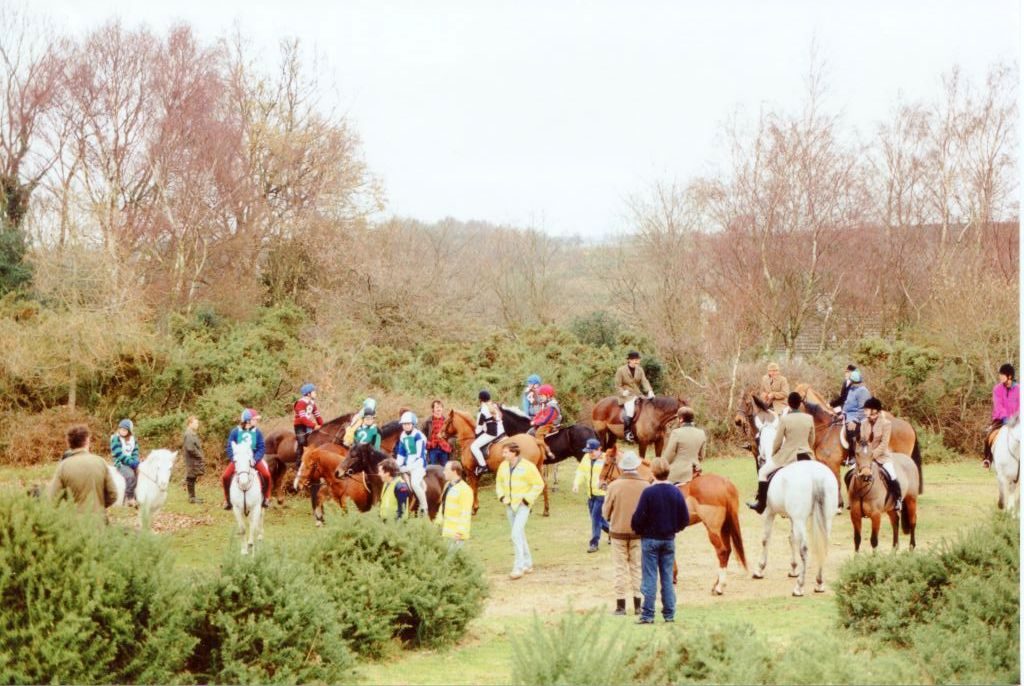
Caroline: Yeah. A view of them all sort of gathering up and milling around, just sort of getting their numbers, getting warmed up ready for the ‘Off’ to head to their start points in the races.
CB: Lovely. Oh, that’s it!! Well done.


